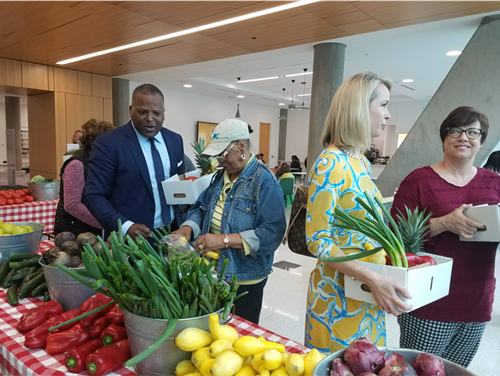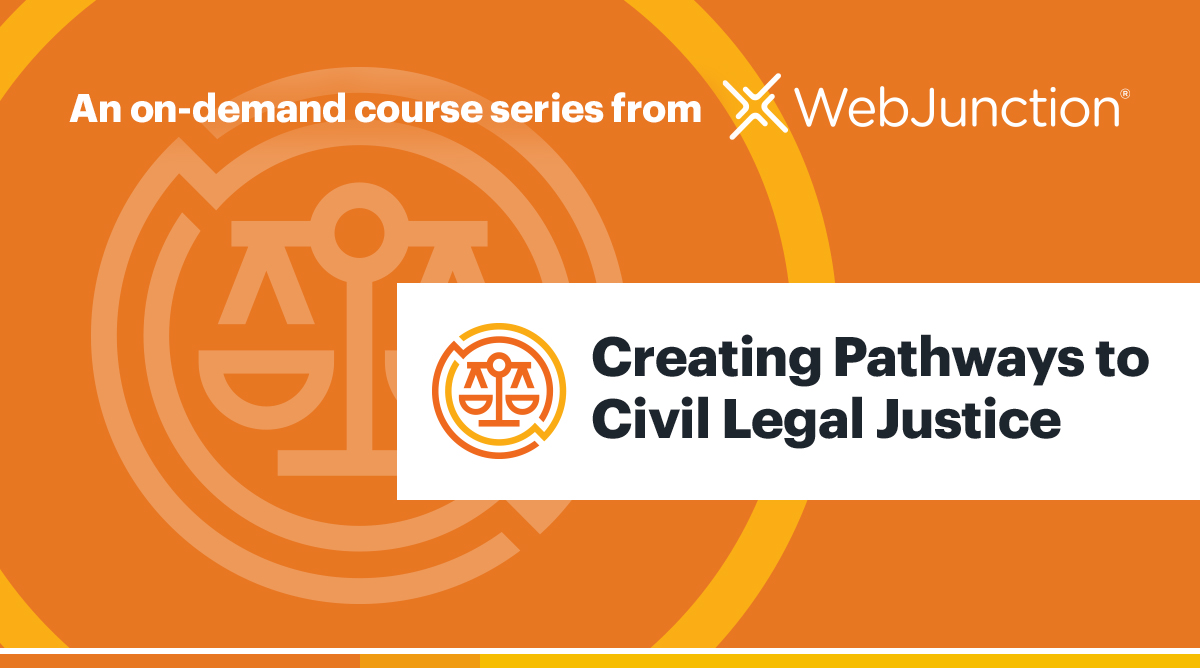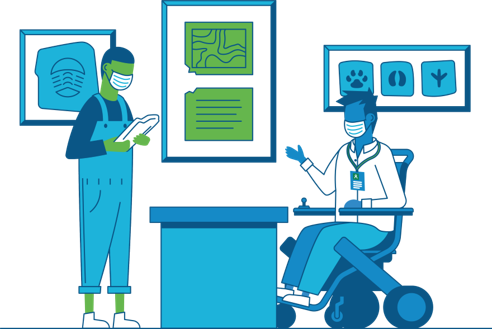Closing equity gaps with community partnerships: Key resources from WebJunction

used with permission
Originally published May 10, 2022 on the Urban Libraries Council blog, written by Erica Melko, Sr. Communications Coordinator/Editor, OCLC.
At the Public Library Association’s 2022 conference, Dr. Audrey Barbakoff gave a talk on "Digital equity through community partnerships," in which she discussed how community partnerships can be building blocks for sustainable digital inclusion programs. The COVID-19 pandemic exacerbated already-existing inequities for many communities, amplifying the need for short-term, pandemic-responsive programming. Now, over two years into the pandemic, libraries are shifting focus away from pandemic-responsive programming and toward sustainable, long-term equity work. And the key ingredient for accomplishing this shift: cultivating rich, diverse community partnerships.
So where to begin? Libraries cannot be everything to everyone. Nor should they be, according to Dr. Barbakoff.
What [our communities] need is equitable redistribution of power and resources to allow [their] strength and brilliance to shine. And the library can be a force for that. We can be there empowering our communities with this asset-based perspective.
This collaborative, asset-based approach to programming means libraries start by building relationships with community partners to identify local needs and desires, clarify the assets that their library can contribute, and collaborate with partners to fill in the rest.
To support this work, this blog post features tools, learning resources and examples from the field — primarily via OCLC’s WebJunction — that implement a community collaboration strategy in addressing the following topics:
- Digital equity and inclusion initiatives
- Improving access to civil legal justice
- Health equity and crisis management planning
Digital Equity and Inclusion
Libraries have a key role in bridging digital equity gaps because of their longstanding work in this area of inequity and their established role as a trusted community resource. Dr. Barbakoff acknowledges that this work could seem intimidating or overwhelming for library staff that do not have deep technical expertise. But the good news is that with partnerships, you don’t need to.
Libraries have rich resources in library staff reference skills, circulation infrastructure and experience, and facilities, as well as a role as a central community hub. None of these require IT expertise. But that’s the beauty of collaboration: each partner brings the assets and expertise that they have to share.
Resources on digital equity partnerships
- “Broadband Improvements: Free Planning Tools for Libraries” (webinar recording)
- “Growing Digital Equity Through Community Partnerships”(webinar recording)
- “Hot Spots Help Span the Digital Divide,” King County Library System (article via KCLS)
- “Inviting the Uninvited: An Unconventional Partnership Helps Bridge the Digital Divide,” Kelvin Watson, Las Vegas-Clark County Library District (article via Urban Libraries Council blog)
- Digital Navigators: The Digital Navigators model provides a replicable blueprint for meeting a community’s digital needs via phone-based support services.
Improving Access to Civil Legal Justice
 Barriers to civil legal justice disproportionately affect low-income people in the United States, creating the justice gap — the divide between the civil legal needs of low-income people and access to the resources to meet those needs. Public libraries are well-positioned to help reduce this gap, and they don’t need to go it alone. Key partners in this area are law libraries and legal aid organizations. These flyers for law libraries and for legal aid organizations can help introduce your public library to potential partners for civil legal programming and resources.
Barriers to civil legal justice disproportionately affect low-income people in the United States, creating the justice gap — the divide between the civil legal needs of low-income people and access to the resources to meet those needs. Public libraries are well-positioned to help reduce this gap, and they don’t need to go it alone. Key partners in this area are law libraries and legal aid organizations. These flyers for law libraries and for legal aid organizations can help introduce your public library to potential partners for civil legal programming and resources.
WebJunction previously wrote a blog post for Urban Libraries Council detailing the role of libraries in “Improving Access to Civil Legal Justice.” Since then, we’ve published Creating Pathways to Civil Legal Justice, a free, on-demand course series.This training helps to strengthen public library staff’s ability to help identify when there is a civil legal issue and to direct library users to relevant, helpful information and services. WebJunction has also collected eviction resources for libraries to help library staff respond to eviction questions with confidence.
Resources on partnering to bridge the justice gap
- Improving Access to Civil Legal Justice through Libraries (project page)
- Successful Partnership Model Provides Legal Assistance Across Colorado (article)
- Bridging the Gap Between Public Libraries & Law Libraries to Improve Access to Justice, Sara V. Pic, Law Library of Louisiana (article)
- “Civil Legal Programming: Libraries Bridging the Justice Gap” (webinar recording)
- More from WebJunction on Legal Reference
Health Equity and Crisis Management Planning
 The REopening Archives, Libraries, and Museums (REALM) project has produced resources and research to support operational decision-making during the COVID-19 pandemic for libraries, archives, and museums throughout all phases of the pandemic. As part of this work, the project has drawn on institutional leaders’ experiences during the COVID-19 pandemic to learn how they leveraged their institution’s core strengths and drew upon trusted partners to navigate the crisis.
The REopening Archives, Libraries, and Museums (REALM) project has produced resources and research to support operational decision-making during the COVID-19 pandemic for libraries, archives, and museums throughout all phases of the pandemic. As part of this work, the project has drawn on institutional leaders’ experiences during the COVID-19 pandemic to learn how they leveraged their institution’s core strengths and drew upon trusted partners to navigate the crisis.
One of the key learnings from the REALM project has been about the importance of expanding community partnerships, from local health organizations in government to collaborating with other cultural heritage organizations. Our conversations with leaders and staff from the field highlighted that building networks of partnerships that foster information exchange and collaboration among museums, libraries, archives, and other local organizations can help institutions manage uncertainty and strengthen capacity during a public health crisis.
Resources on collaborating for public health crisis planning
- “We Can’t Go It Alone: Community-Centered Collaborations during COVID-19” (webinar recording)
- Strengthening Communities: Food Access at Your Library (webinar recording)
- Visit the REALM project website
- REALM project resource roundups and health equity resources
- “Build on strengths when responding to a crisis,” by Sharon Streams, Executive Director WebJunction and REALM project Director (article)
- “Public Health is Part of Library Outreach,” Noah Lenstra, U of North Carolina (article)
- "Public Libraries and Public Health: Partners for Community Health” (webinar recording)
